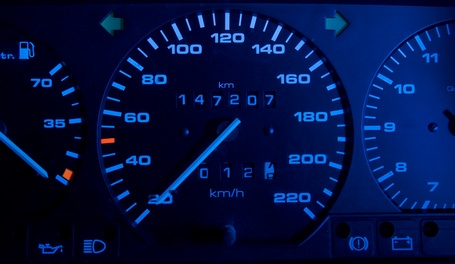
After years of wear and tear, potential Dodge Dakota engine problems can take many forms. The engine can backfire, the engine can make knocking noises and the acceleration can lag or falter. For every symptom that presents itself, there can be multiple possible explanations. For this reason, the Dodge's On-Board Diagnostic system can provide a bit of guidance. It will not fix your problem, but it could potentially reduce the amount of time it takes to locate the source of the problem.
Prepare for troubleshooting ahead of time. This includes bookmarking relevant pages with your OBD-II hand-held user's manual. You will need exact descriptions for generic codes used in all OBD-II compliant cars and light trucks. You will also need to go onto the Internet and locate Chrysler's unique and supplemental OBD-II codes. The Dakota's owner's manual lacks this information. Print out the coding lists. Place both the printed material and your OBD-II hand-held's manual into the Dakota's navigator's seat.
Connect your OBD-II scanner to your Dakota's Data Link Connector port. The DLC port will be located next to the left kick panel and beneath the driver's side dashboard. If your scanner has an auto-activation feature, it will turn itself on once it senses a connection with the Dakota's computer. If your scanner does not have this feature, you will need to turn it on yourself.
Turn on the Dakota's electrical system. This will "wake up" the vehicle's diagnostic computer. Depending on the scanner you own, you may have to also start the Dakota's engine.
Key in a command to retrieve the OBD-II codes from the Dakota's computer. The button layout on diagnostic scanner's differ by brand. Also, some scanners are preset to automatically retrieve codes. Either way, consult your specific scanner's manual for the exact instructions.
Scroll through the retrieved codes and located all the ones flagged by "trouble" status. Copy these codes onto a notepad. Always investigate trouble codes first. These are frequently recorded malfunctions, and they are the reason why the "service engine" light goes on.
Copy any remaining codes onto your notepad. These will be "pending" codes. They are still malfunctions, but they have not happened with the regularity of the Dakota's trouble codes. Still, this could be a sign of developing problems.
Consult the materials you placed in the navigator's seat. Look up the coding descriptions and definitions and copy them onto your notepad. Turn off the Dakota and remove the ignition key. Detach the scanner from the DLC port.
Open the Dakota's engine compartment and troubleshoot the engine according to the problems on your list. Draw a line through both code and description once you have eliminated them from consideration.
Prepare for troubleshooting by locating the "check engine" flash codes online. You will not find this information in the Dakota's owner's manual. Print out the code list and place it in the Dakota's navigator's seat.
Put the key into the ignition. In less than five seconds, turn the key back and forth in the following sequence: on-off-on-off-on.
Count how many times the "service engine" light flashes. Chrysler's flash codes consist of only two numbers. For example, code 62 will consist of six flashes, a pause and two additional flashes. The flashes will be of equal length, and there will be a longer pause between separate flash codes. Write down all of the code numbers.
Consult the printout you left in the navigator's seat for coding descriptions and definitions. Copy them next to their corresponding code numbers.
Turn off the Dakota and remove the key from the ignition. Pop open the engine compartment and troubleshoot the engine using your list as a reference.